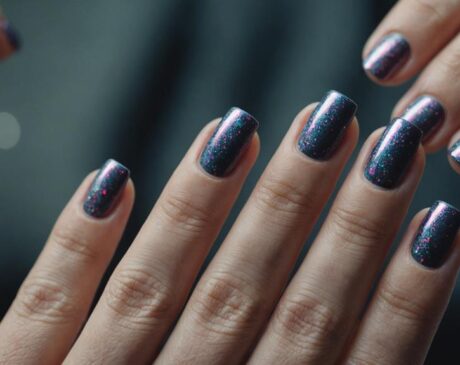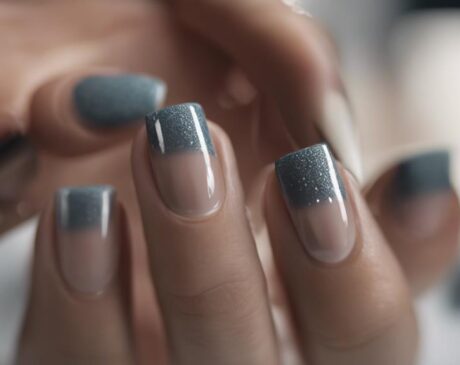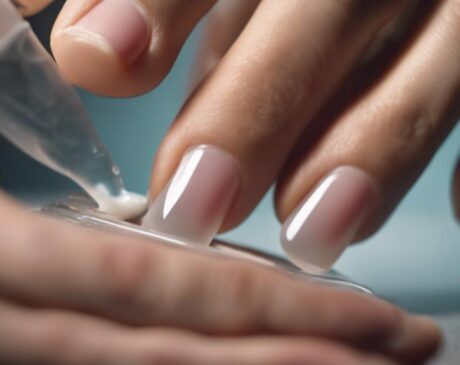Why Do My Nails Hurt When I Put Them Under UV Light?
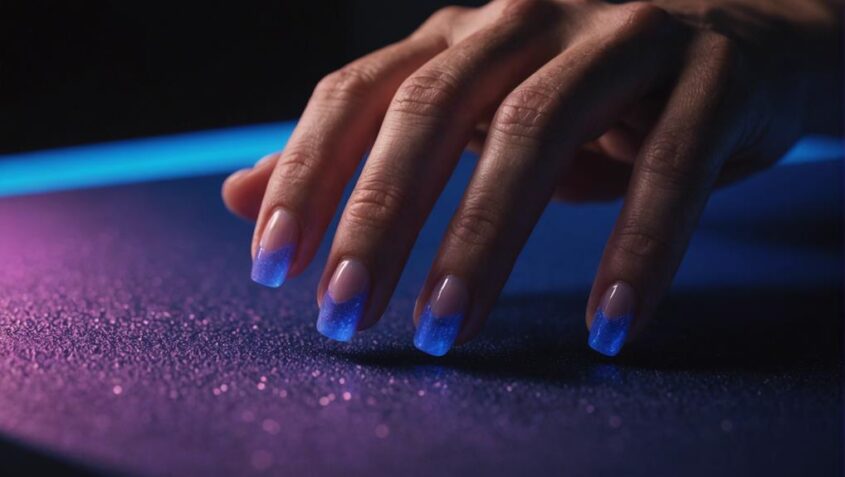
Exposure to UV light during nail treatments can lead to nail pain due to factors like dehydration, heat sensitivity, trauma, and chemical sensitivities. UV light activates photoinitiators in gel polish, triggering reactions that can cause discomfort. Understanding UV exposure levels is crucial, as intensity and duration impact the extent of damage. To minimize nail discomfort, hydrate nails, use moisturizing products, consider UV-protective polish, and wear protective gloves. Seeking advice from professionals like dermatologists or nail care specialists can help diagnose underlying causes and provide effective treatment plans. Ensure proper nail care routines for healthier nails. Learn more about nail care recommendations for pain relief.
Key Takeaways
- Dehydration increases nail sensitivity to UV light.
- Heat sensitivity can intensify discomfort during UV exposure.
- Previous nail trauma can make nails more sensitive to UV light.
- Chemical sensitivities contribute to nail pain under UV light.
- Improving hydration and protection routines can minimize nail discomfort.
The Science Behind UV Nail Lamps
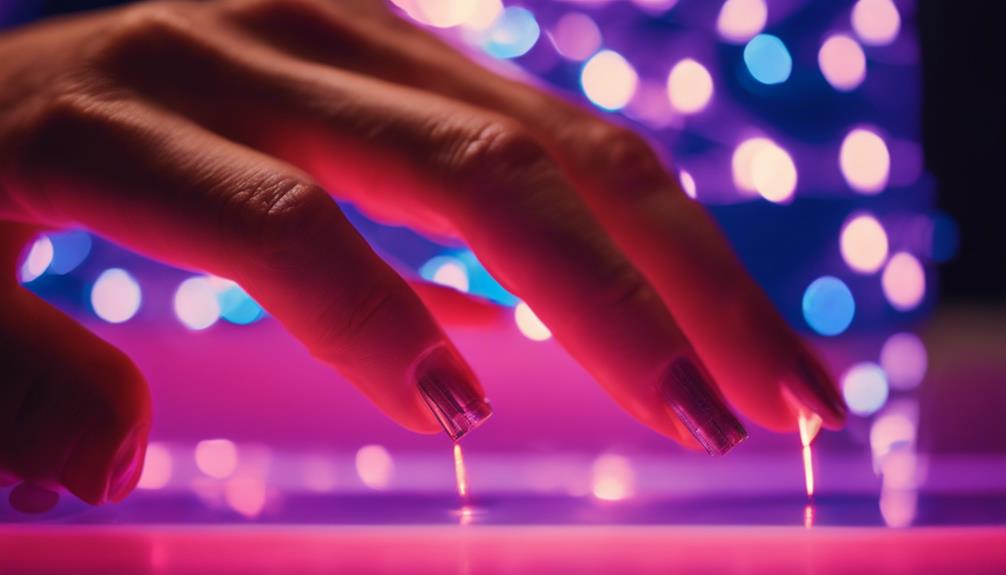
UV nail lamps are devices commonly used in salons for curing and drying nail polish. These lamps emit ultraviolet light, specifically UVA rays, to quickly harden gel polish on nails, providing a long-lasting and durable finish. The science behind UV nail lamps involves a process called photopolymerization, where the UVA light initiates a chemical reaction in the gel polish that transforms it from a liquid to a solid state.
During the curing process, the UVA light activates photoinitiators in the gel polish, triggering a cross-linking reaction that forms a hard polymer. This polymerization reaction is essential for creating a strong bond between the gel polish and the natural nail, ensuring a chip-resistant and glossy finish. UV nail lamps come in different wattages and configurations to provide optimal curing conditions for various types of gel polish formulations.
Understanding the science behind UV nail lamps is crucial for nail technicians to achieve the best results for their clients. By harnessing the power of UVA light and photopolymerization, salons can offer efficient and high-quality nail services that meet the demands of customers seeking long-lasting and beautiful manicures.
Potential Causes of Nail Pain
The discomfort experienced under UV light during nail treatments may arise from various potential causes related to nail health and sensitivity. Here are some factors that could contribute to nail pain under UV light:
- Dehydration: Dry, brittle nails are more prone to sensitivity and discomfort when exposed to UV light.
- Sensitivity to Heat: Some individuals have nails that are more sensitive to heat, which can be exacerbated under UV light.
- Nail Trauma: Previous trauma or damage to the nails can make them more sensitive and painful under UV exposure.
- Chemical Sensitivities: Sensitivity to the products used in the nail treatment process, such as primers or polishes, can lead to discomfort when exposed to UV light.
Identifying and addressing these potential causes can help in mitigating the discomfort experienced during UV nail treatments, ensuring a more pleasant and pain-free experience for individuals seeking nail enhancements.
Understanding UV Exposure Levels
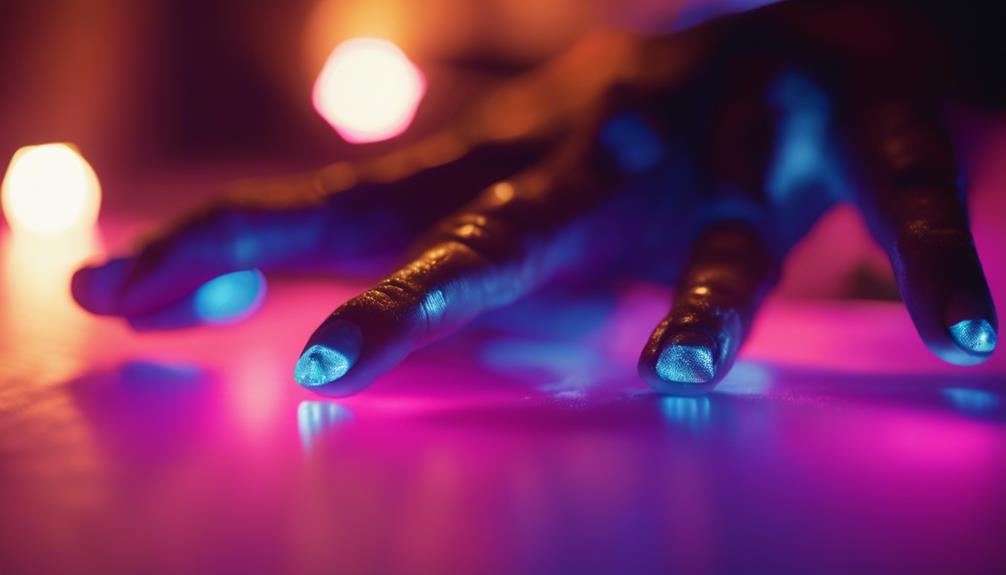
When it comes to understanding UV exposure levels, two critical factors to consider are the intensity of the UV light and the duration of exposure. The intensity of the UV light refers to how strong the radiation is, while the duration of exposure is the length of time the nails are exposed to the UV light. These two factors play a crucial role in determining the potential harm that UV light can cause to the nails.
UV Light Intensity
Understanding the levels of exposure to ultraviolet (UV) light is crucial in determining its potential impact on various surfaces and materials. When it comes to UV light intensity, consider the following:
- Low Intensity: Typically safe for short exposure periods.
- Moderate Intensity: May cause mild reactions on sensitive surfaces.
- High Intensity: Can lead to quicker material degradation.
- Extreme Intensity: Poses a high risk of damage and should be avoided without proper protection.
Duration of Exposure
In assessing UV exposure levels, the duration of exposure plays a critical role in determining the overall impact on surfaces and materials. The length of time an object is exposed to UV light influences the extent of damage or changes that may occur. Short exposures may not lead to immediate effects, but prolonged exposure can result in degradation, discoloration, or structural alterations. Understanding the relationship between exposure duration and UV light effects is essential for designing UV protection strategies and mitigating potential risks. Researchers are constantly exploring innovative methods to quantify and monitor UV exposure durations accurately, enabling better protection measures for various applications. By recognizing the significance of exposure duration, advancements in UV-resistant technologies and materials continue to evolve, ensuring enhanced durability and performance in UV-rich environments.
Tips for Minimizing Nail Discomfort
To alleviate nail discomfort caused by UV light exposure, implementing proper hydration and nourishment routines can be highly beneficial. Here are some innovative tips to minimize nail discomfort:
- Hydrate from Within: Drink plenty of water to keep your nails hydrated from the inside out, promoting overall nail health and resilience against UV exposure.
- Use Moisturizing Products: Apply cuticle oil or a rich hand cream regularly to maintain moisture levels in your nails and surrounding skin, reducing the risk of dryness and sensitivity under UV light.
- Protective Nail Polish: Consider using a UV-protective nail polish or top coat to create a barrier between your nails and the UV light, helping to shield them from potential damage.
- Wear UV-Protective Gloves: When undergoing UV light treatments or exposing your hands to UV light for extended periods, consider wearing UV-protective gloves to minimize direct exposure and reduce discomfort.
Seeking Professional Advice
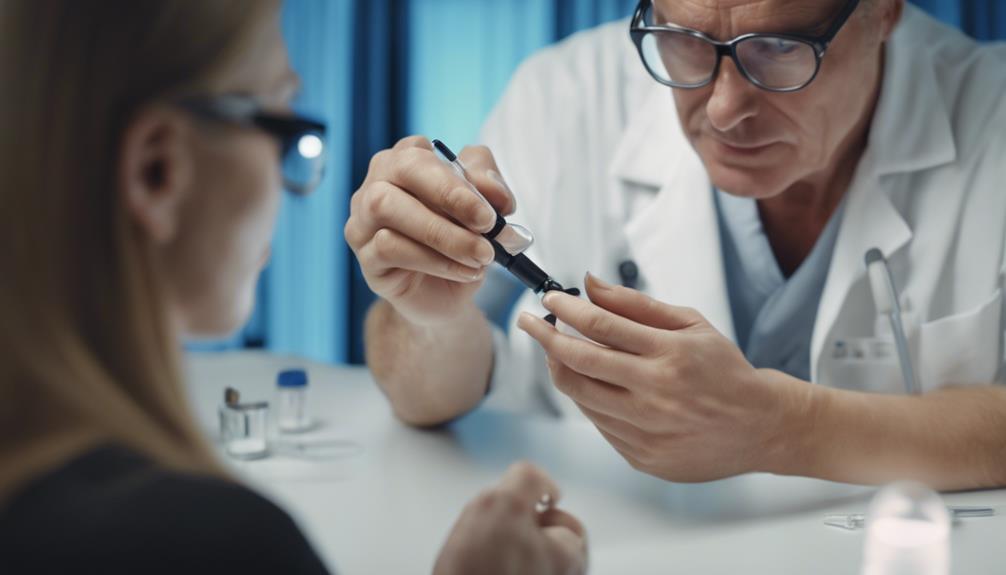
Professional consultation from a qualified dermatologist or nail care specialist is essential for addressing and managing nail discomfort experienced under UV light exposure. These professionals possess the expertise to diagnose the underlying causes of nail pain when exposed to UV light, which can range from minor issues like dryness and sensitivity to more serious conditions such as UV-induced dermatitis or nail damage. Seeking their advice is crucial for developing an effective treatment plan tailored to your specific needs.
Dermatologists can conduct thorough assessments to determine if your nail pain is a result of an allergic reaction to the materials used in nail treatments or if it signifies a more severe problem that requires medical attention. Nail care specialists, on the other hand, can provide valuable insights into proper nail care routines and recommend suitable products to minimize discomfort and prevent further damage.
Conclusion and Nail Care Recommendations
After seeking guidance from knowledgeable professionals to address nail discomfort under UV light, implementing proper nail care routines and recommendations is vital for maintaining healthy nails and mitigating further pain. To ensure optimal nail health and prevent discomfort under UV light, consider the following nail care recommendations:
- Hydration is Key: Keep your nails hydrated by regularly applying cuticle oil or moisturizer to prevent dryness and brittleness.
- Protective Measures: When exposing your nails to UV light during manicures, use a broad-spectrum sunscreen or wear protective gloves to shield your skin and nails from potential damage.
- Regular Trims: Trim your nails regularly to maintain a healthy length and prevent them from becoming weak or prone to breakage.
- Quality Products: Invest in high-quality nail products free from harmful chemicals like formaldehyde, toluene, and DBP, which can contribute to nail sensitivity and discomfort.
Frequently Asked Questions
Can UV Nail Lamps Cause Skin Cancer?
UV nail lamps are a common source of concern due to their potential link to skin cancer. Prolonged exposure to UV rays emitted by these lamps may increase the risk of skin cancer. Protective measures like sunscreen can mitigate this risk.
Are LED Nail Lamps Safer Than UV Lamps?
Innovative LED nail lamps offer a safer alternative to traditional UV lamps. Their advanced technology emits lower levels of UV radiation, reducing the risk of skin damage. Choosing LED lamps promotes both safety and style in nail care practices.
How Long Should I Expose My Nails to UV Light?
The optimal exposure time for nails under UV light should be determined based on the specific gel or polish being used. Consulting with a professional nail technician for guidance on the appropriate duration is recommended for best results.
Can Nail Pain Be a Sign of an Underlying Condition?
Nail pain can sometimes be a signal of an underlying health issue, warranting professional evaluation. Like a hidden treasure waiting to be discovered, uncovering the root cause is essential for optimal wellness and beauty.
Should I Avoid Using Nail Lamps Altogether?
Consider limiting nail lamp use to minimize potential risks. Prioritize nail health with alternative techniques like air-drying or LED lamps. Consult a dermatologist for personalized advice on safe nail care practices.

